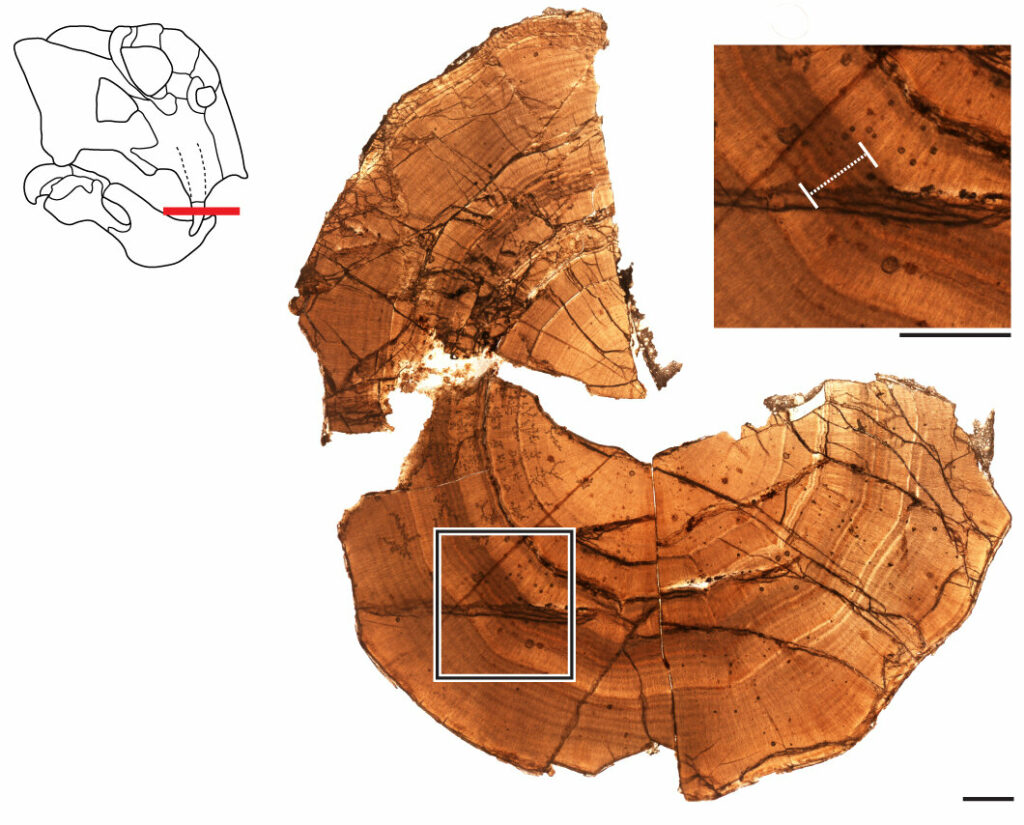
Many creatures on Earth today hibernate, essentially entering a state of low metabolism that allows them to go through months at a time without food. According to researchers, this adaptation may be at least 250 million years old, judging from the fossils of a recently described creature that could enter a hibernation-like state.
The fossils of the mammal-like creature, which belongs to the genus Lystrosaurus, were retrieved from Antarctica. Although during Lustrosaurus’ days Antarctica may have been much more welcoming, it would have still experienced extended periods without sunlight each winter.
“Animals that live at or near the poles have always had to cope with the more extreme environments present there,” said lead author Megan Whitney, a postdoctoral researcher at Harvard University who conducted this study as a University of Washington doctoral student in biology. “These preliminary findings indicate that entering into a hibernation-like state is not a relatively new type of adaptation. It is an ancient one.”
The stout, four-legged forager was roughly pig-sized, although some could grow up to 8 feet long (2.5 meters). Lystrosaurus, which has been found in India, China, Russia, Africa, and now Antarctica, had no teeth at all. Instead, the stubby vertebrate had a pair of tusks in the upper jaw, which likely served to penetrate ground vegetation and dig out roots and tubers.
Like elephants, these tusks grew continuously throughout Lystrosaurus‘s life. In their new study, Whitney and colleagues used cross-sections of fossilized tusks to infer valuable information about the metabolism, growth, and stresses of during these creatures’ lifetimes. They did so for many specimens, comparing cross-sections of tusks from six Antarctic Lystrosaurus to cross-sections of four Lystrosaurus from South Africa.
During Lystrosaurus‘ heyday in the Triassic, South Africa and Antarctica were joined together in a supercontinent called Pangea. Back then, Antarctica was about 72 degrees south latitude (still well within the Antarctic circle) while South Africa was displaced by more than 550 miles north compared to its position today, sitting at a warm 58-61 degrees south latitude.

Similar to how a tree’s rings can tell how many years it was alive for, or when it suffered drought, layers of dentine were also deposited in concentric circles in the fossilized tusks. Curiously, Antarctic tusks had thicker, more closely spaced dentin rings, indicating periods of less deposition. For the researchers, this suggests periods of prolonged stress that resemble the effects of hibernation.
The closest analog we can find to the ‘stress marks’ that we observed in Antarctic Lystrosaurus tusks are stress marks in teeth associated with hibernation in certain modern animals,” said Whitney.
That’s not to say that the researchers can definitely conclude that Lystrosaurus could hibernate, which is essentially a resting state of deep sleep, during which the body’s metabolic rate and temperature drop considerably. For instance, during hibernation, the gopher’s body temperature will drop from its normal 37 degrees Celsius to almost 0 degrees Celsius. The heartbeat also becomes slow and irregular, alongside a slowing breathing rate.

The same stress may have been caused by another hibernation-like form of torpor, which involves a more short-term reduction in metabolism, the researchers wrote in the journal Communications Biology.
In any event, Lystrosaurus must have benefited greatly from hibernation-like states. Although Antarctica was much warmer than it is today and might have even been forested during the Triassic, it would have still experienced extreme annual variations of daylights, with the sun absent for months at a time during winter. Torpor may have helped creatures such as Lystrosaurus cope with the dire strains of pitch-black winter.
“To see the specific signs of stress and strain brought on by hibernation, you need to look at something that can fossilize and was growing continuously during the animal’s life,” said co-author Christian Sidor, a University of Washington professor of biology and curator of vertebrate paleontology at the Burke Museum. “Many animals don’t have that, but luckily Lystrosaurus did.”
If the findings are confirmed, this means Lystrosaurus is the earliest example of a hibernating vertebrate that we know of. It would also highlight the fact that many different features of modern animals likely existed hundreds of millions of years ago, long before any humans were around to study them.
“Cold-blooded animals often shut down their metabolism entirely during a tough season, but many endothermic or ‘warm-blooded’ animals that hibernate frequently reactivate their metabolism during the hibernation period,” said Whitney. “What we observed in the Antarctic Lystrosaurus tusks fits a pattern of small metabolic ‘reactivation events’ during a period of stress, which is most similar to what we see in warm-blooded hibernators today.”



